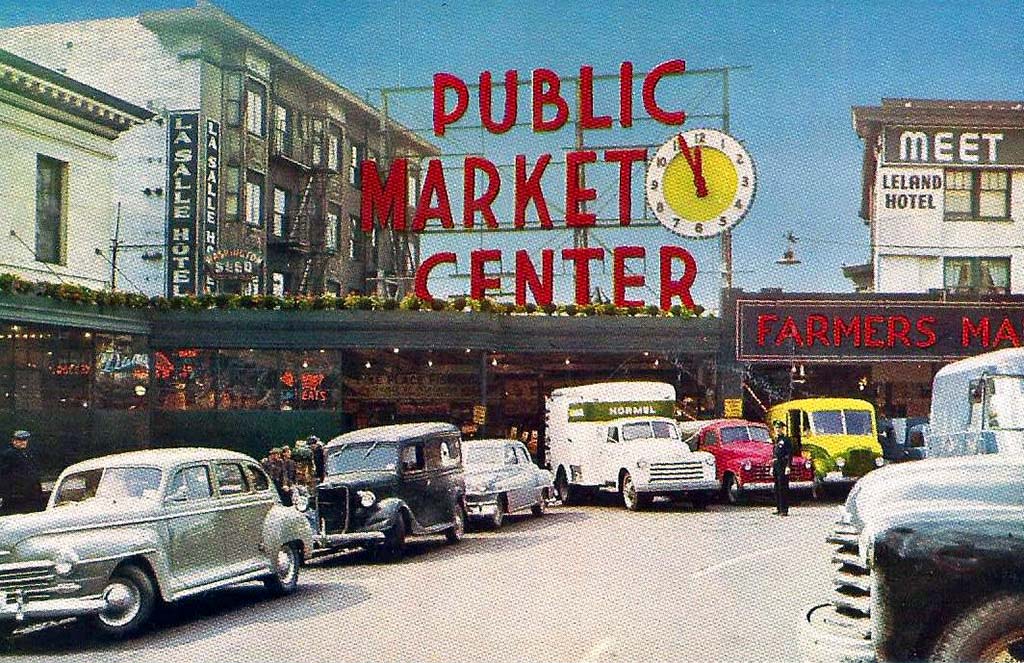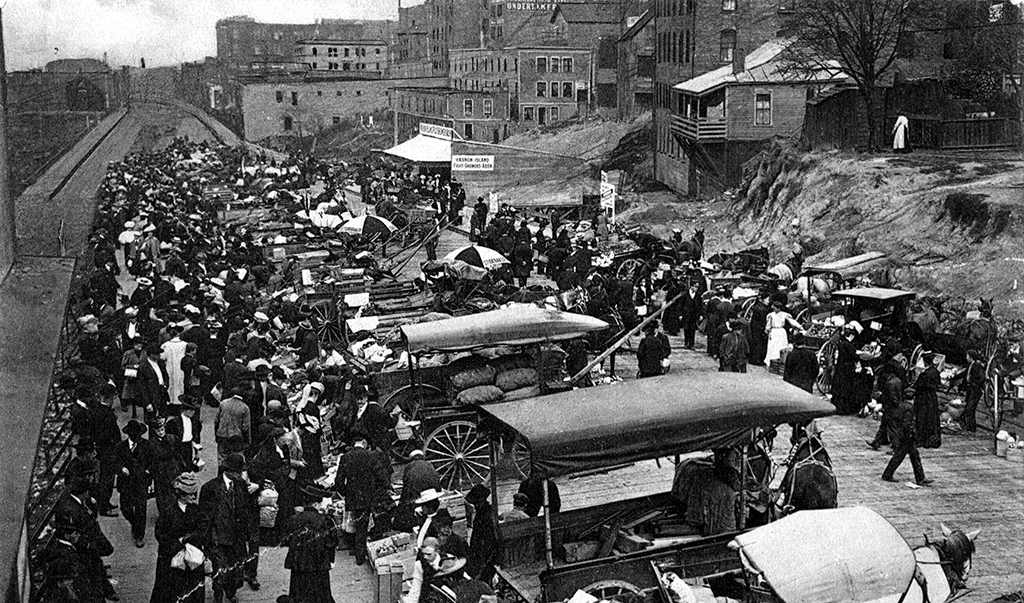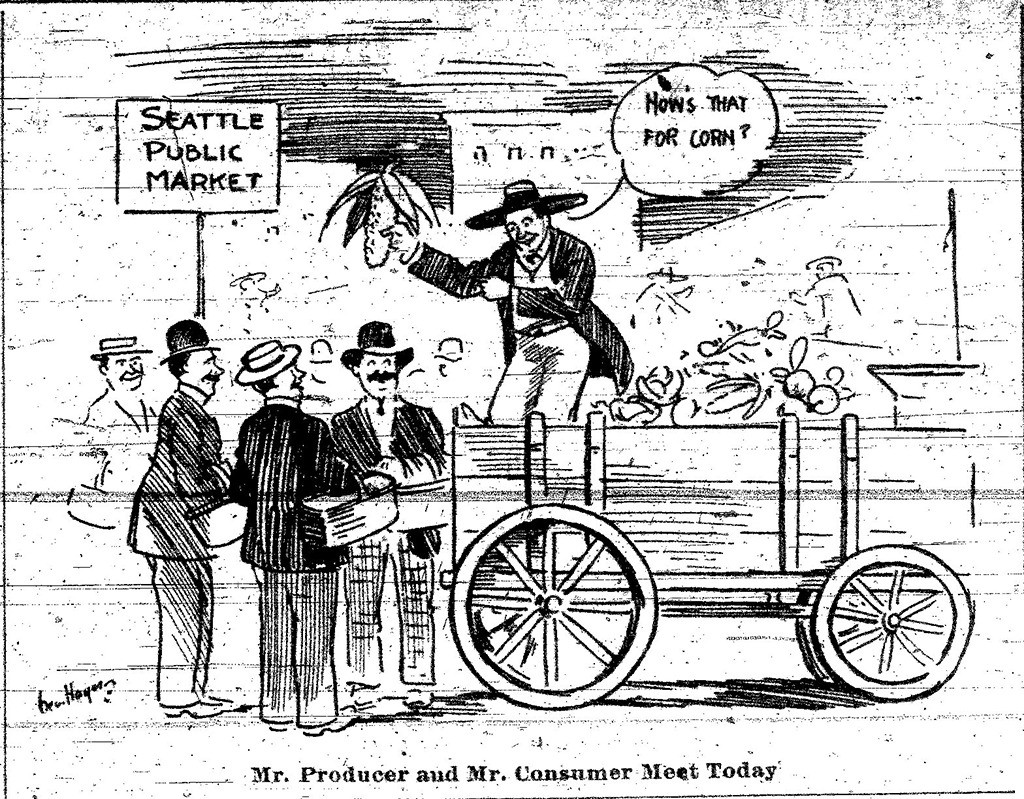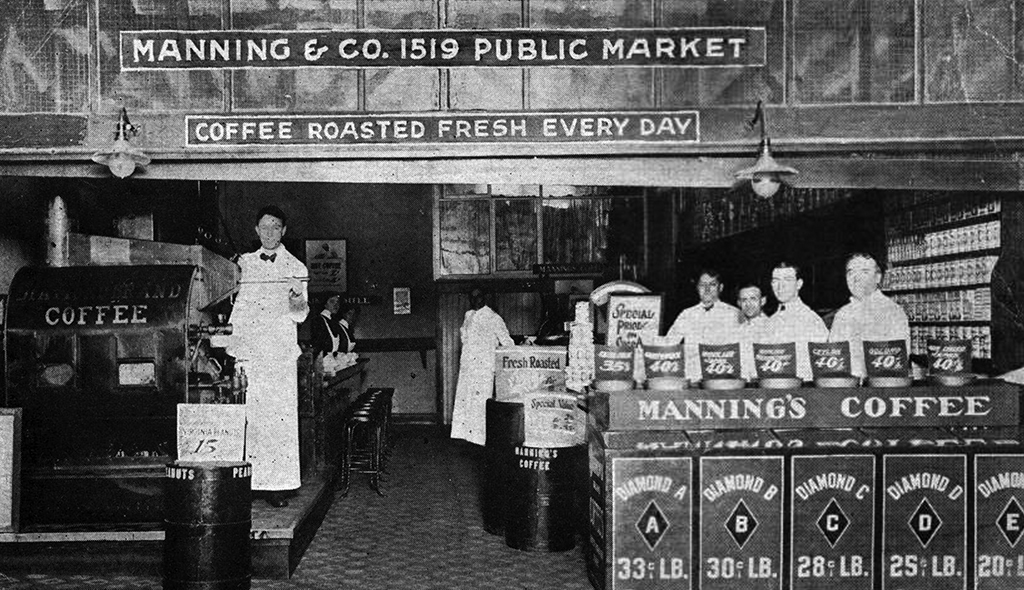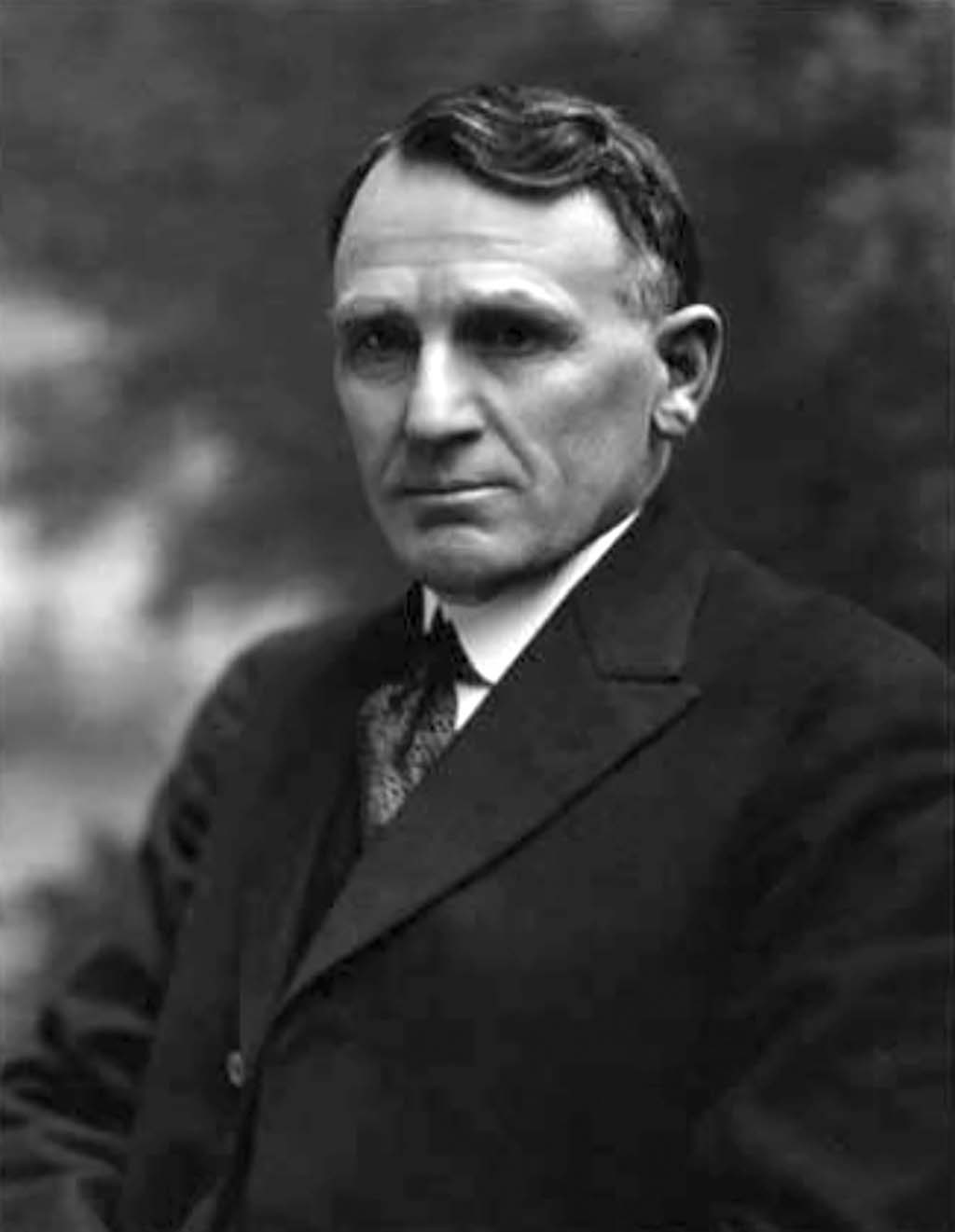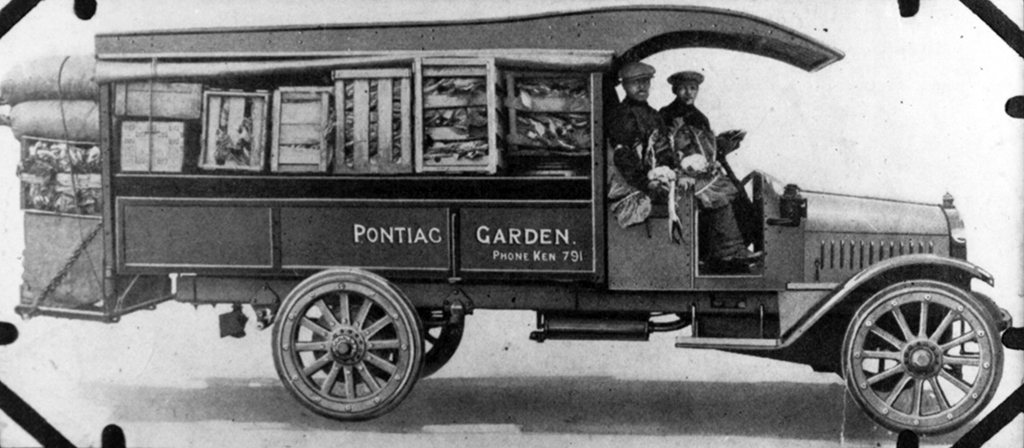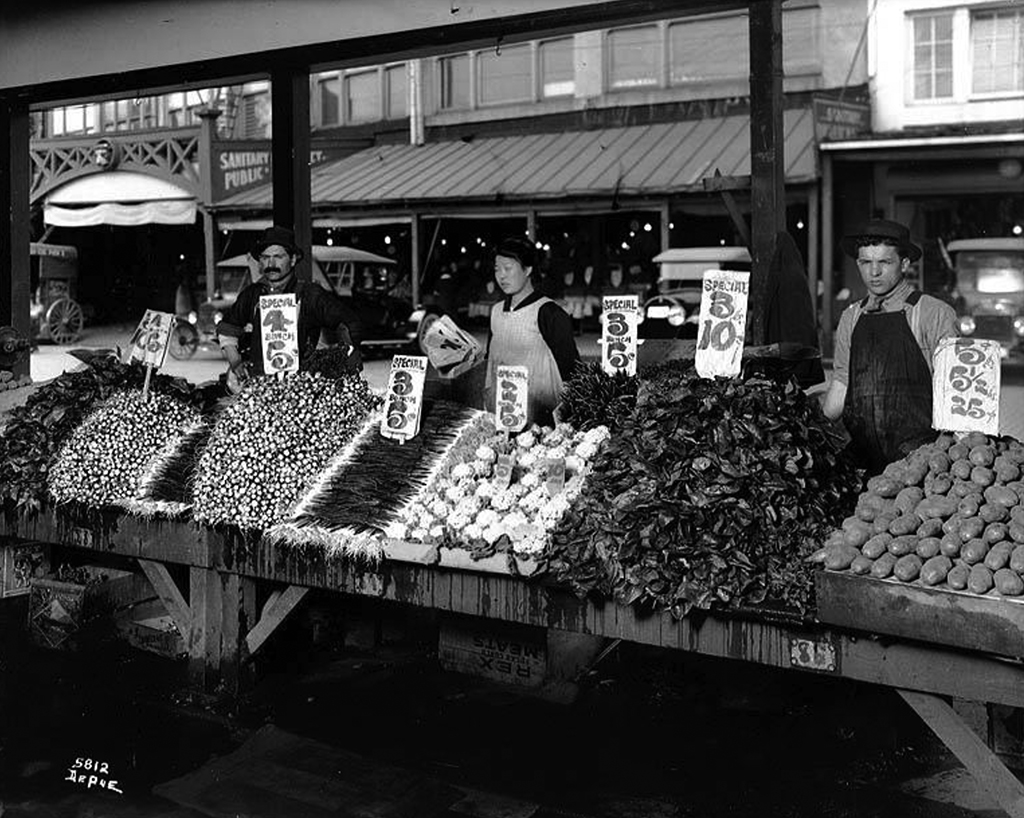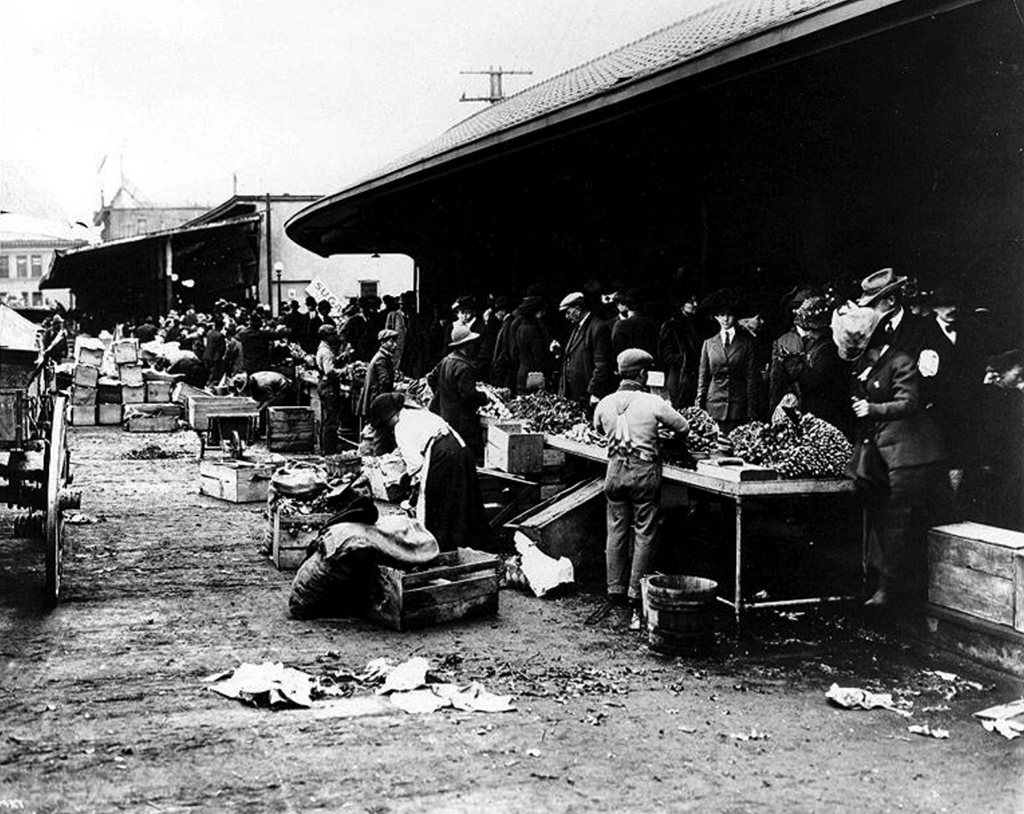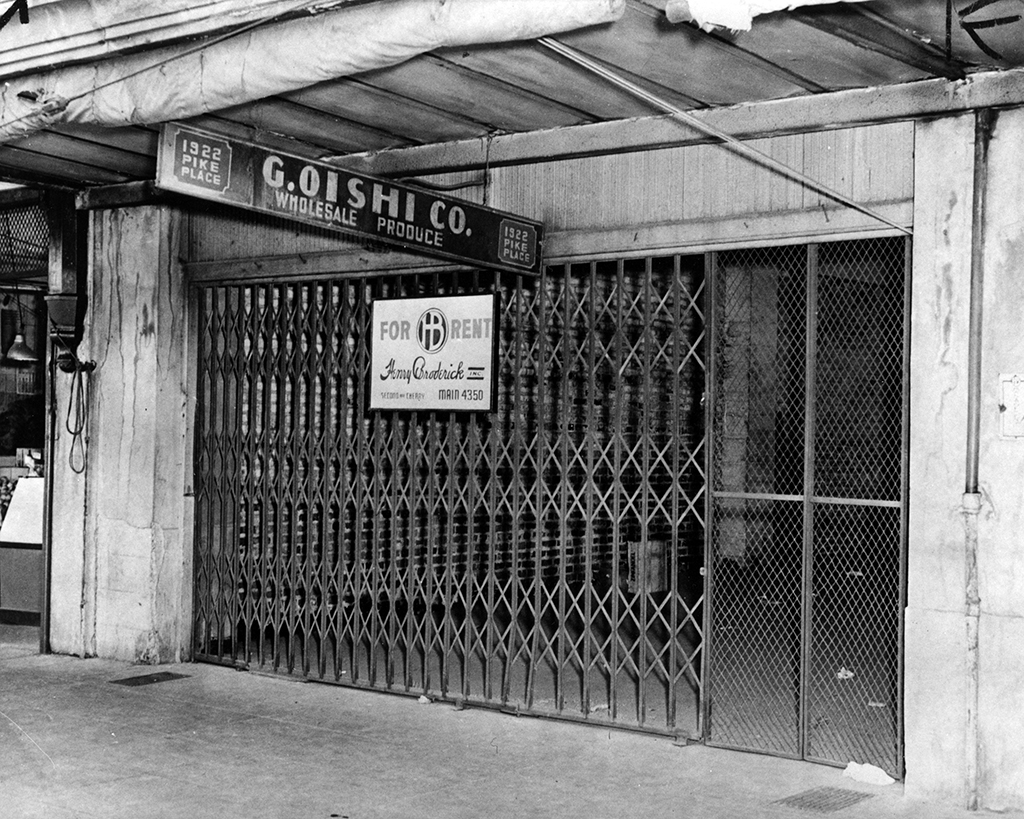-
Pike Place Market
Pike Street and Pike Place
Pike Place Market
Our tour begins at the entrance to Pike Place Market and heads north along Pike Place.
In the early 1900s, the many Chinese, Filipino, German, Italian, and Japanese who farmed Rainier Valley, and the Duwamish, Black, and White River valleys primarily only one method to sell their produce, using a broker, who paid little and then raised the prices to the public. The opening of the Pike Place Market on August 17, 1907, forever changed that sales structure by providing space for the farmers to deal directly with the public via an open market of carts. Three months later, Frank Goodwin, using money he had obtained in the Klondike Gold Rush, created the first permanent arcade, a covered shed structure with rent ranging from $4 to $25/month. By 1917, most of the main market structures had been built.
Adding to the diversity of the farmers were Sephardic Jews, Serbians, Slovenians, and Scandinavians. These groups helped create an opportunity to interact with arguably one of the more diverse communities of people in the city. During World War II, Executive Order 9066, which led to relocation and incarceration of Japanese Americans on the West Coast, resulted in a loss of more than half the markets’ sellers. Change continued as more and more farmland in King County was converted to industry. By the 1960s plans had arisen to demolish the much-dwindled market. But rallied by architect Victor Steinbrueck, the citizens of Seattle voted in November 1971 to save what was called “an honest place in a phony time.” Pike Place Market is now the most visited site in Seattle.
Walk a block north to Pine Street for our next stop.
